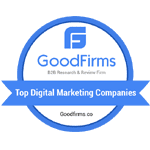
The Best User Acquisition Techniques to Drive Traffic to Your Mobile Apps
With over 2 million apps in both Play Store and App Store, the two largest distribution channels for mobile apps, it is becoming increasingly difficult for developers and publishers to achieve visibility for their apps. Hence, while the focus on making the app more discoverable continuous to be of utmost importance, more and more app owners are looking to acquire users through various paid acquisition sources to supplement their organic numbers for faster growth.
There are various means and sources for an app owner to acquire users inorganically including PR and influencer marketing but digital advertising remains the most popular way of acquiring a user for most apps largely because of:
- Granularity in targeting
- Mass reach
- Detailed pre & post-install analytics
An effective advertising strategy for user acquisition involves reaching a targeted audience, acquiring users, analyzing every step of the conversion funnel and post-install usage and optimizing the campaigns as per goals defined by the app owner (more engaged users, more paying users, etc.).
Advertising – Incent vs non-incent
Paid user acquisition strategies range from rewarding a user to download your app to running promotions to reach your target audience by highlighting the app’s core offerings.
Incentivized downloads can have a massive viral effect on customer acquisition. Incent is ideal in scenarios where users are driven by rewards and have a sense of urgency, e.g., in the case of mobile games. The greatest (and possibly only) advantage of incent campaigns over non-incent is the ability to bring you bulk downloads at very low costs (from users who will most likely never use your app) that can lead to improved store ranks in a short span of time, which can eventually improve your app’s organic performance.
Non-incent, on the other hand, is the process of acquiring users who are genuinely interested in your app and are not downloading it in return for a reward. Hence, while incent traffic is driven by rewards, non-incent traffic is driven by relevance. However, since non-incent campaigns target and drive relevant users, the lifetime value (LTV) of users acquired in the latter would be higher. Word of caution: Getting incentivized downloads, though still around, is considered a black hat technique and something that is not recommended. Apple, in fact, has come down heavily on apps using incentivized downloads in the past.
Ad platforms & what to select?
The numerous ad platforms available for you to promote your app work on the concept of either push or pull marketing. Push marketing is the promotional strategy in which apps attempt to get their message in front of their potential customers without them actively searching for it. Push marketing ad platforms allow apps to reach relevant potential users by pushing ads to a targeted audience to build awareness about the app. Ad platforms like Facebook, Instagram, and most ad networks work on the concept of push marketing.
Pull marketing, on the other hand, takes a different approach reaching customers who are actively searching for your app or the problem your app solves. So your ad shows up when a user is searching for a solution your app provides. The keywords that you choose to bid for your ads, therefore, are of utmost importance if you are using this strategy. Ad networks like Apple Search Ads work on the concept of pull marketing.
The first step in devising a successful mobile paid acquisition strategy is selecting the ad network and platform you want to promote your app on. Parameters like push or pull, the granularity of audience interests and targeting, the operating systems supported by your app, etc are some factors that you should consider when choosing a platform that works best for you.
For the purpose of this article, let’s talk about some of the ad platforms we’ve worked with.
Apple Search Ads
iOS apps can be promoted on Apple Search Ads. Apple Search Ads is a pull marketing ad platform which shows ads on App Store when a user searches for or relevant keywords you are bidding for. You have an option to select between Basic and Advanced platforms based on the amount of effort you’d want to put in for marketing activities on Apple Search Ads. While ads running on Basic are automated and optimized by the algorithm itself, you can select relevant keywords, bids, and audience on Advanced.
Google Ads
Formerly known as “Adwords”, Google Ads allows us to run universal app install campaigns for iOS and Android apps. For mobile app install campaigns, you can target users based on their location, set a budget and optimize bids for the same. Essentially, your ads would appear on Google Search Network (Google Search and Google Search Partners), Google Play, Display Networks, and YouTube.
Facebook/Instagram
Facebook and Instagram work on the concept of push marketing. Since they provide a fairly detailed audience targeting option, they are a great choice if you want to target users based on their demographics and interests. Since Instagram appeals a lot more to a younger audience, it would be wise to choose Instagram if you’d like to show your ads to a younger audience. Along with audience targeting, creatives and ad copies also play an important role in bringing you installs. Since people use Instagram and Facebook for leisure activities, a compelling ad copy and creative works best. Also, do not forget to A/B test multiple audiences, ad copies, and creatives to identify what works best for your app.
Snapchat
Apart from Instagram, Snapchat is another platform which GenZ and millennials use quite a lot these days. The key to advertising on Snapchat is knowing your target audience. We’ve also seen that humor in ads (when feasible) tends to attract such an audience. App install ads on Snapchat include a swipe up feature that takes users directly to your app listing on App Store or Play Store.
Quora
A relatively newer platform, Quora provides a range of options from keyword targeting to question and audience targeting for mobile app promotion. You can select and target relevant keywords where you want your ad to appear or you can select specific questions (based on question impressions) or you can select interest categories where you’d like your ad to appear. You can also set a targeted cost per conversion, the country you’d like to promote in and daily budget. However, you need to use an attribution tool (Appsflyer, Kochava, etc.) to track installs from Quora.
Again, we reiterate, it is ideal to test and try different platforms based on your requirements to identify what works for your app.
Ad Networks
Mobile ad networks connect publishers and advertisers. App developers can use ad networks to serve ads to their users on relevant publisher properties. The network facilitates this by aggregating ad inventory from the publishers it is integrated with and then sells the inventory to advertisers.
While Google Ads and Facebook Ads also fall under the category of ad networks, there are numerous other ad networks you could try to monetize your app like AdMob, Applovin, InMobi, Leadbolt, Smaato, etc.
Paid Acquisition Metrics to Keep in Mind
The most important cost to keep in mind when running paid acquisition campaigns is the Customer Acquisition Cost (CAC) or the cost incurred to bring a new customer to your business. It is specifically calculated in terms of marketing cost, events or advertising and in reference to a specific campaign or time frame.
In the case of mobile apps, usually the most crucial metric to measure user acquisition campaign success is the Cost Per Install commonly referred to as the CPI. At a very basic level, a marketer/ agency/ app owner should look at the CPI to measure the effectiveness of their marketing campaign/ platform. Of course, you could measure your campaign effectiveness by much more granular metrics such as Cost Per Open Up or even Cost Per Registration.
And although a low CPI alone is no guarantee of a great acquisition strategy (since one must also look at the quality of users acquired in terms of app engagement and retention), it does give you something to judge your campaigns on.
Successful UA continuously relies on data-driven decisions. It is imperative to shift focus from quantity to quality over time. Focus on post-install app engagement and strategize future user acquisition campaigns to gain high-quality users.If you are looking for user acquisition services for your mobile app(s), contact us at sales@studiomosaicapps.com.




0